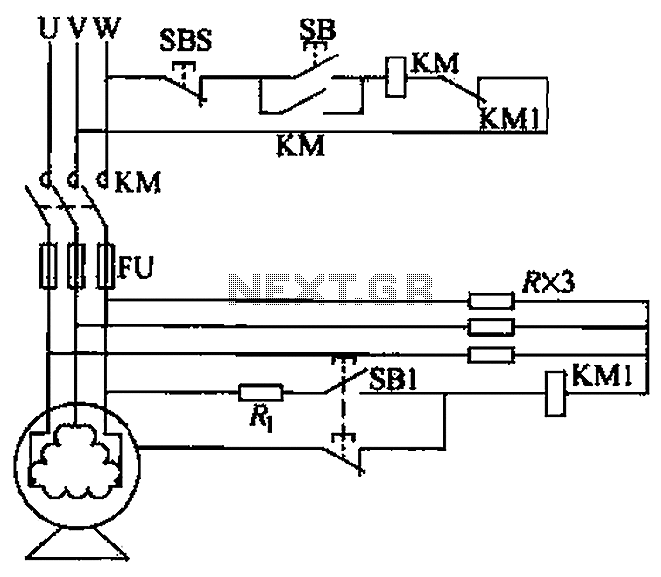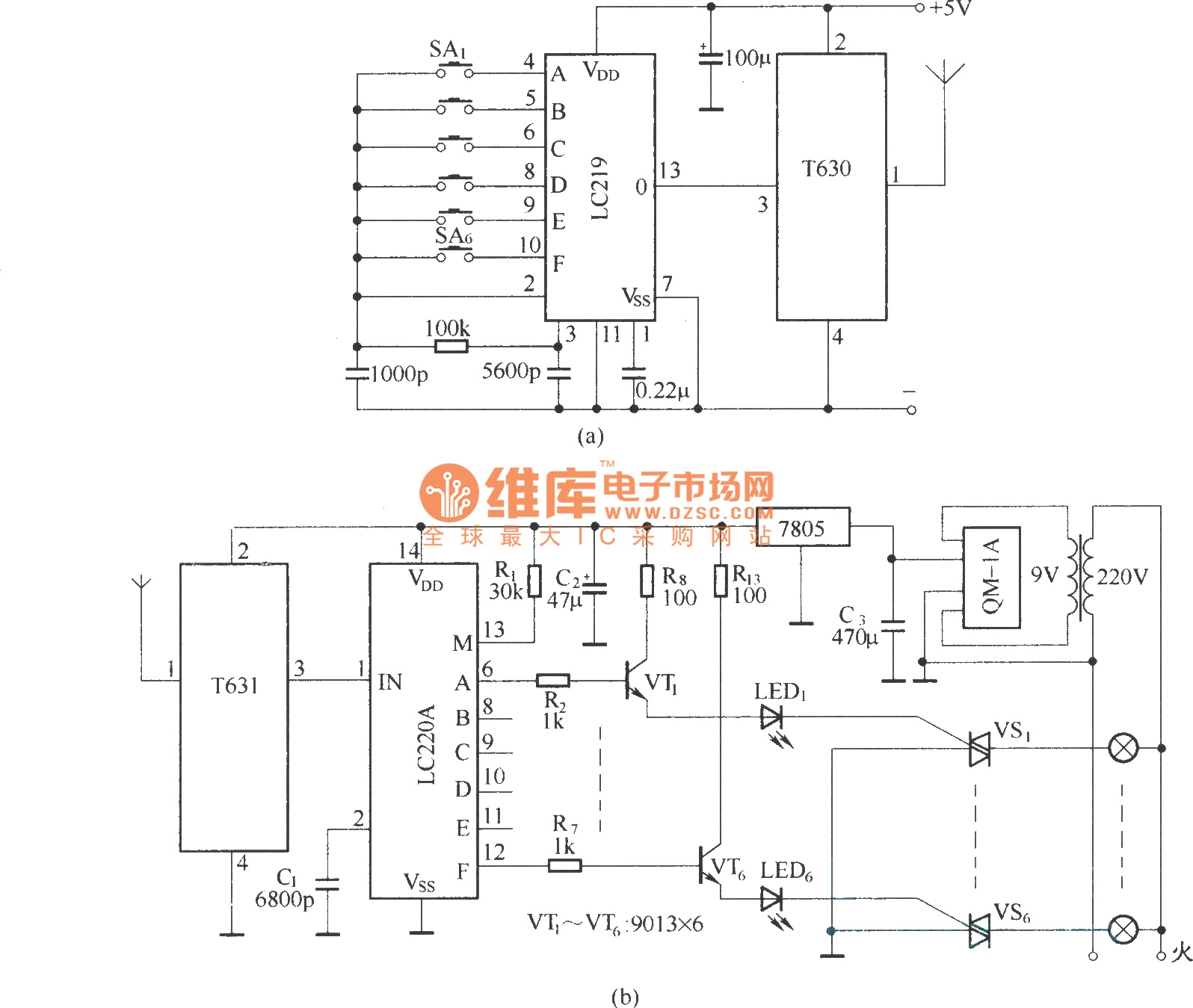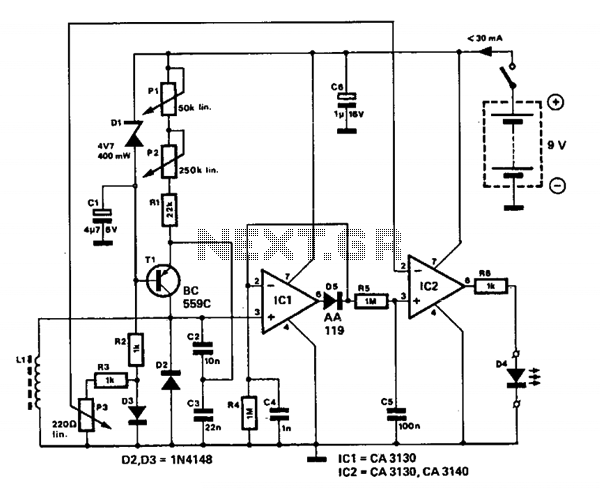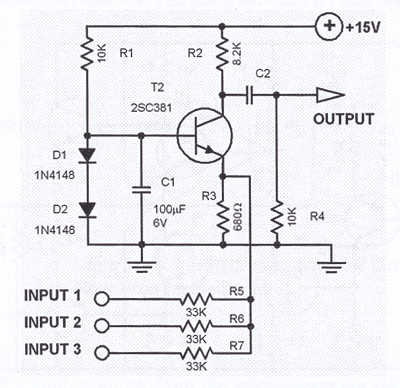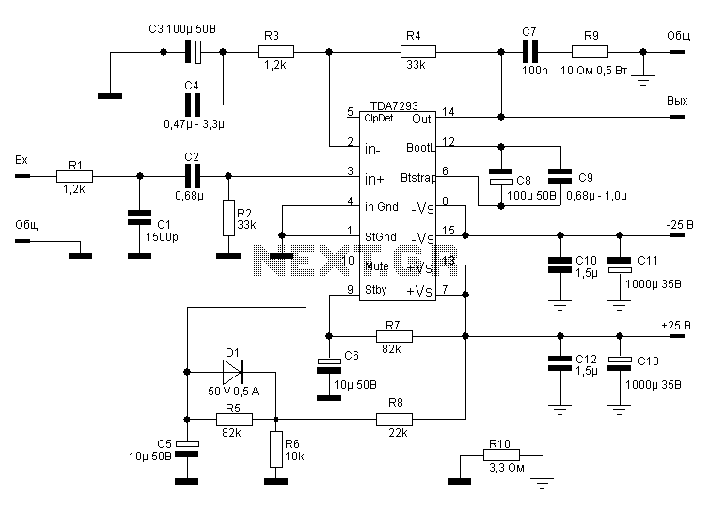
A circuit diagram of a portable gas detector
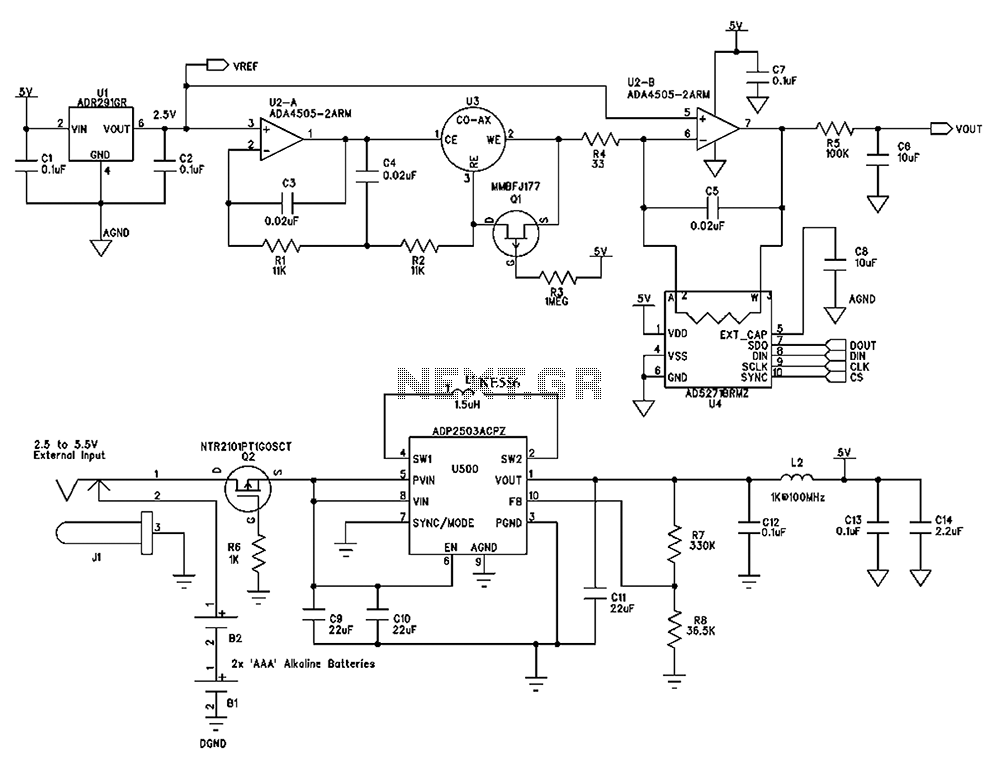
The circuit diagram presented below illustrates a portable gas detector. This device primarily utilizes electrochemical sensors and features dual-channel micro-power amplifiers, specifically the ADA4505-2. These amplifiers are configured in both a constant potential (U2-A) and a transconductance configuration (U2-B). The design emphasizes low power consumption and minimal input bias current, making it an optimal choice for battery-operated applications. Each amplifier consumes only 10 µA, contributing to an extended battery life.
The portable gas detector circuit is designed for the detection of various gases, leveraging the sensitivity of electrochemical sensors. The ADA4505-2 amplifiers play a crucial role in signal conditioning, ensuring that the output from the sensors is amplified adequately for further processing. The constant potential configuration (U2-A) is utilized to maintain a stable reference voltage, which is essential for accurate sensor readings. Meanwhile, the transconductance configuration (U2-B) converts the voltage signal from the sensor into a proportional current signal, which is often more suitable for downstream processing.
The low power consumption of the ADA4505-2 amplifiers is particularly advantageous in portable applications where battery life is critical. With each amplifier drawing only 10 µA, the overall power requirements of the gas detector are minimized, allowing for prolonged usage without frequent battery replacements. This characteristic is particularly beneficial in environments where continuous monitoring is necessary, such as industrial settings, confined spaces, or during field operations.
Additionally, the circuit design may incorporate features such as filtering and signal processing to enhance the detection capabilities and reduce noise interference. The choice of components, including the electrochemical sensors and the amplifiers, is vital in achieving the desired sensitivity and specificity for the target gases. Overall, the portable gas detector circuit exemplifies an efficient design tailored for reliable gas detection with a focus on energy efficiency and long operational life. As shown below, it is a circuit diagram of a portable gas detector. The portable gas detector circuit is used mainly in electrochemical sensors, dual-channel micro-power amplif iers ADA4505-2 configured in a constant potential (U2-A) and transconductance configuration (U2-B) under use. The amplifier power consumption and very low input bias current, the constant potential portion and transconductance section are all good choices.
Each amplifier consumes only 10 A, so the battery life is very long.
The portable gas detector circuit is designed for the detection of various gases, leveraging the sensitivity of electrochemical sensors. The ADA4505-2 amplifiers play a crucial role in signal conditioning, ensuring that the output from the sensors is amplified adequately for further processing. The constant potential configuration (U2-A) is utilized to maintain a stable reference voltage, which is essential for accurate sensor readings. Meanwhile, the transconductance configuration (U2-B) converts the voltage signal from the sensor into a proportional current signal, which is often more suitable for downstream processing.
The low power consumption of the ADA4505-2 amplifiers is particularly advantageous in portable applications where battery life is critical. With each amplifier drawing only 10 µA, the overall power requirements of the gas detector are minimized, allowing for prolonged usage without frequent battery replacements. This characteristic is particularly beneficial in environments where continuous monitoring is necessary, such as industrial settings, confined spaces, or during field operations.
Additionally, the circuit design may incorporate features such as filtering and signal processing to enhance the detection capabilities and reduce noise interference. The choice of components, including the electrochemical sensors and the amplifiers, is vital in achieving the desired sensitivity and specificity for the target gases. Overall, the portable gas detector circuit exemplifies an efficient design tailored for reliable gas detection with a focus on energy efficiency and long operational life. As shown below, it is a circuit diagram of a portable gas detector. The portable gas detector circuit is used mainly in electrochemical sensors, dual-channel micro-power amplif iers ADA4505-2 configured in a constant potential (U2-A) and transconductance configuration (U2-B) under use. The amplifier power consumption and very low input bias current, the constant potential portion and transconductance section are all good choices.
Each amplifier consumes only 10 A, so the battery life is very long.
